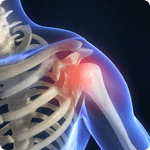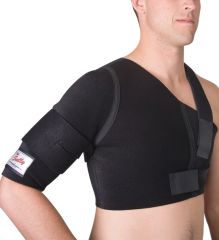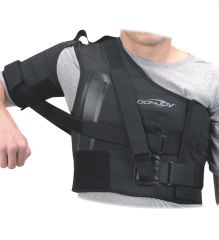Shoulder Instability

The shoulder has the widest range of motion in the body. You use it to lift your arms, reach up over your head, and it can rotate in many directions. However, this makes your shoulder susceptible to instability problems. Your shoulder joint includes the ball of your upper arm bone and the socket of the shoulder. Shoulder instability occurs when the structures around your shoulder joint no longer keep the ball within the socket. When the joint is partially out of place it is known as shoulder subluxation. When it is comes completely out of place, it is called a shoulder dislocation. Once a shoulder has come out of place, it is vulnerable to repeated injury, which is known as chronic shoulder instability.
Causes of Shoulder Instability
As mentioned, a patient who has experienced shoulder subluxation or a dislocated shoulder is susceptible to shoulder instability. However, shoulder instability can also occur in people who have never had an actual shoulder injury. Sometimes repeat motion can cause strain on the ligaments that hold your joint in place, such as repeated overhead motion in tennis and volleyball. Some jobs also require overhead tasks which may loosen your shoulder ligaments, resulting in an unstable shoulder.
Symptoms of Shoulder Instability
Common symptoms of chronic shoulder instability include pain and feeling like the shoulder is loose or giving out. Patients may also suffer from repeated shoulder dislocations.
How to Treat Shoulder Instability
As with any injury, your doctor will be the best source of advice on the appropriate treatment method for your situation. Treatment typically begins by abstaining from activities that aggravate the shoulder. This means that you may need to limit overhead movement with your arms. Wearing a shoulder instability brace may help support your arm and prevent pain and further injury. Your doctor may also suggest physical therapy to help strengthen the shoulder muscles and increase stability in the surrounding tissue. Anti-inflammatory medications such as ibuprofen or aspirin may be used to reduce pain and swelling.
If non-surgical treatments do not work after several months, your doctor may suggest surgery. Surgery is used to repair any loose or torn ligaments so that they can hold your shoulder joint in place. Your surgeon may use arthroscopic shoulder surgery or he may suggest open surgery. After surgery, you will need to restrict movement with your shoulder using an arm immobilizer for a few weeks. After the sling is removed, your doctor will put you on a plan to rehabilitate your shoulder and the surrounding ligaments.
Support and Protection for Shoulder Instability
View All Braces for Shoulder Instability







